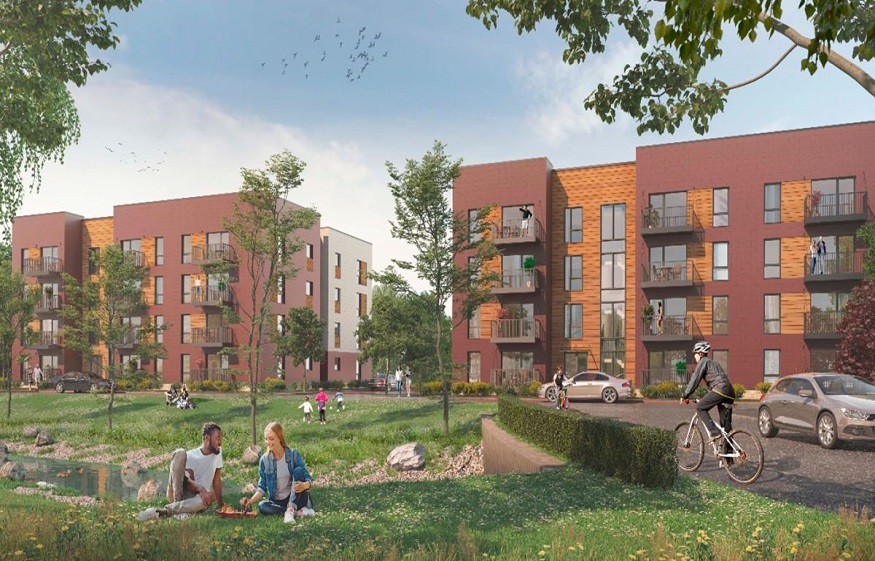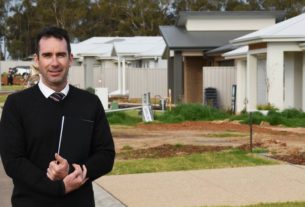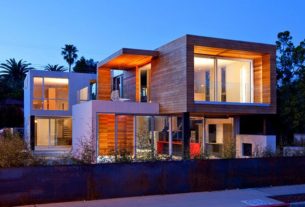Over the last few years, more and more people have contacted us and asked about the options of building a prefabricated Wooden home, the main reason for considering this option is the possible economic savings which people hope to obtain by using this system.
With characteristics similar to prefabricated homes, but at the same time with great differences, industrialized homes are appearing on the market. Still, most homes are built in the traditional way. But how is a prefabricated house different from an industrialized one? What about a traditional home? Which is the best option?
Although at first it may seem to us that these three options to build a house give the same results, the truth is that in many aspects they have nothing to do with it. If you want a house that is already well built and has all good aspects, you can buy the “Apartment for Sale in Abu Dhabi”.
Here, we are going to see the main differences by parts.
The Constructive Method
We will talk about this matter first since the construction method is where we find the main differences between a prefabricated house, an industrialized house and a traditional house.
The traditional house is built in the way that we all know and that we can see in most of the works of today when passing by. Practically 100% of the works are carried out on the site or plot where construction will be completed for many years.
Read more: Filing a Rental Dispute in Dubai
Materials, workers, machinery and everything necessary are transported to the site and all the work is carried out there. Some elements, such as windows or doors, already arrive ready to work to be installed, but almost everything else is “manufactured” on the site until the building is finished.
The prefabricated house is one that is built entirely in a warehouse or industrial workshop. Once finished, it is transported, in one piece or divided into few parts, to the construction site.
The only works carried out on the plot or plot are the conditioning of the land, the foundation and / or the platform on which the house will rest.
Finally, industrialized housing could be defined as a system halfway between the previous two. In this case, the house is divided into several parts or modules that are manufactured in an industrial warehouse.
Once manufactured, the different components or modules are transported to the site, where the different pieces are assembled until the house is completely finished. In order to assemble the house, it will also be necessary to have prepared the site and the foundation beforehand.
Customization and Design Possibilities
The next aspect that we are going to talk about is design because the possibilities of each option (traditional, prefabricated or industrialized housing) are a direct consequence of the construction method used (analyzed in the previous point).
The traditionally built house is undoubtedly the one that offers the greatest possibilities in terms of freedom of design and customization. As we have seen, the traditional construction method is very “artisanal”.
The materials arrive on site and are joined to each other, which allows, not only a great freedom for the design of the project, but also that modifications can be made on the fly, which can have negative consequences (such as extra costs or execution errors).
It is not uncommon for changes in design to occur during traditional works and, for this reason, there is a document called “end of project”, in which the architect draws up plans of the final design of what has finally been built. .
Read more: Why Choose Mid-Century Modern Design
The prefabricated house is the opposite of the traditional house in terms of customization and design possibilities. Manufactured housing companies often provide the customer with a catalog of limited designs from which to choose an option.
This means that many times we do not find the perfect housing option for us and, as we will see later, any modification to the pre-established design is a significant extra cost.
These houses are designed to be economical, but for this we must settle for the designs offered by the manufacturer. In addition, all materials, paints and other finishes must be those specified in the catalog, allowing you to choose from very few options. It is a prefabricated house but also pre-designed.
Housing Quality
A crucial aspect and also largely a consequence of the construction method used in each of the housing options that we are analyzing, is the quality of the construction, not in terms of finishes, but in terms of durability and reliability of the house itself.
The houses of traditional construction must have the quality specified by the architect in the project, in addition, during the work, the architect and the rigger control that everything is executed correctly.
The problem with traditional construction is that neither the architect nor the rigger can be continuously on site, checking that absolutely everything is executed correctly.
This, when we build a house with poorly trained or trained personnel, can lead to serious execution errors that we will later suffer during the use phase (humidity, lack of thermal insulation, air leaks, etc.).
Furthermore, traditional construction is developed in a more “aggressive” environment for workers, generally outdoors, exposed to inclement weather,
The prefabricated houses will have the quality specified in the catalog. This does not depend on an architect, but on the interests of the company that sells the manufactured home.
If the company is reliable and competent, the house can be of good quality and durable, if the company is not good, the quality of the construction can be a disaster.
The disadvantage of this type of housing is that we cannot choose quality, we do not have an architect on our side who defends our interests, the quality will be established by the company that sells us a certain model from the catalog of manufactured homes.
On the other hand, prefabricated houses are built in closed and fully specialized spaces. The operators who work there always repeat the same operations, since the houses are those established in a catalog.
That is, there are fewer variables than in traditional construction. There is greater control (even if not by the architect or rigger, the works are carried out in an industrial warehouse where the same thing is always manufactured and there will always be a person in charge of supervising the works).
And, therefore, the possibility of errors or defects in the quality of the construction (with respect to what is established in the catalog) is less than in traditional construction (with respect to the project).
Industrialized housing, in this regard, includes the best features of prefabricated housing and the best of traditional construction.
In this type of dwelling, the architect draws up a project, with qualities that conform to what the developer or client has asked him to do.
Then this project is subdivided into parts or pieces to be built, respecting the qualities established in the project, in an industrial warehouse, with specialized personnel and in a more controlled environment.
The architect must adapt the project so that it can be built in an industrialized way and adjust to some conditions that may be set by the company in charge of manufacturing the different pieces of the house.
Then, on the site, you just have to assemble the pieces with each other.
That is, the most complex part (manufacturing) is carried out in a warehouse or industrial workshop with qualified personnel, and the simplest part (assembly) is carried out on site, where it is often impossible to improperly assemble the parts because they only fit one way.
Thanks to all this, the chances of errors or defects in construction quality are greatly reduced.
It should be noted that, in the case of both prefabricated housing and industrialized housing, as work is carried out in a space protected from the outside, even heated on many occasions, workers will carry out their tasks with greater comfort.
The working environment is also important and greatly influences the quality and result of the work carried out.
Construction Times and Deadlines
The reduction of construction times is another of the great advantages of prefabricated and industrialized housing compared to traditional construction.
The problem of traditional construction with deadlines is well known and depends on many factors. One of them is the fact that, to start building a house in the traditional way, we have to wait for the license, meanwhile, the progress of the work or the start of the work is stopped.
In Madrid, for example, currently you have to wait on average more than a year to obtain the license, if the house is built in a traditional way, the project will spend a good season waiting for the approval of the city council before they can start construction work.
Once the work has started, the large number of companies and workers to be coordinated is such that it is rare that there is no additional delay, in addition, when the work is carried out outdoors.
There may be times of the year when you cannot directly work due to the weather (snow, frost, rain, etc.). A 150 m2 detached house can take 6 months to build, once the license is obtained.
The prefabricated house is the one that has it easier to optimize the terms, generally much shorter than in the traditionally built house. For starters, many manufactured homes do not even need a planning license, they can be purchased and placed directly on the site.
On the other hand, in those prefabricated homes that do require a license, while we wait for it, nothing prevents us from starting to manufacture the home in the corresponding industrial warehouse, which in itself represents a significant saving of time.
In addition, as we said, these homes are usually models from a catalog, designed from start to finish by the same company that manufactures them.
It allows optimizing the number of workers, material orders, the tasks to be carried out and even logistics (transport from the house to the site), being able to control and manage construction times very effectively.
The construction of a prefabricated house of 150 m2 (adjusted to a model in the catalog) in the workshop can take a little more than 1 month, the placement on the site is a matter of 1 day (even in the morning).
In this case, in addition, it must be added that, whenever we choose the house from the catalog without making changes in its design, we will not need to wait for the plans and other project documents to be ready, so the time dedicated to this task also is discounted.
The construction of a prefabricated house of 150 m2 (adjusted to a model in the catalog) in the workshop can take a little more than 1 month, the placement on the site is a matter of 1 day (even in the morning).
In this case, in addition, it must be added that, whenever we choose the house from the catalog without making changes in its design, we will not need to wait for the plans and other project documents to be ready, so the time dedicated to this task also is discounted.
The construction of a prefabricated house of 150 m2 (adjusted to a model in the catalog) in the workshop can take a little more than 1 month, the placement on the site is a matter of 1 day (even in the morning).
In this case, in addition, it must be added that, whenever we choose the house from the catalog without making changes in its design, we will not need to wait for the plans and other project documents to be ready, so the time dedicated to this task also is discounted.
In industrialized dwellings, construction times are also significantly optimized compared to traditional construction.
Once the project has been carried out and the license has been applied for, many of the pieces of the house can start to be manufactured (some may even be already manufactured and stored if they are standard parts of the company in charge of industrialization).
It is not necessary to respect the traditional order of work since the project has been divided into independent pieces, so many parts of the house can be carried out simultaneously.
The final assembly of all the pieces on site is not a very problematic task from the point of view of the times, provided that logistics and transport are well organized, Industrialized homes can be assembled on site in a matter of days.
The construction of all the pieces of an industrialized single-family house of 150 m2 in the workshop can take 2 or 3 months and the assembly on site can be done in 1 day.
Conclusions
The key to industrialized construction is that, when manufacturing the building in parts, it does not have the typical size limitation of a prefabricated house, and construction times are also shortened, making project financing cheaper (the client pays and receives your home in a shorter time).
In addition, the manufacture of each part or module independently, allows a great specialization of professionals and better and easier quality control, which translates into fewer errors during manufacturing and, therefore, greater end-user satisfaction. On the other hand, this type of construction, protected from the weather, in prepared areas, with greater safety and with all the tools at hand is the best. These are the main reasons why large developers and construction companies are betting today on industrialized construction.



